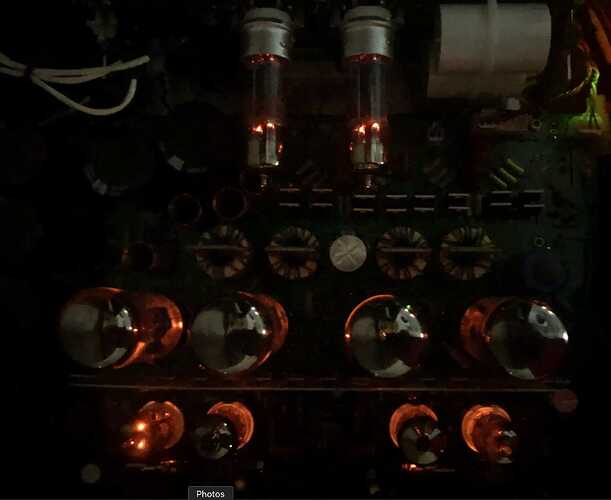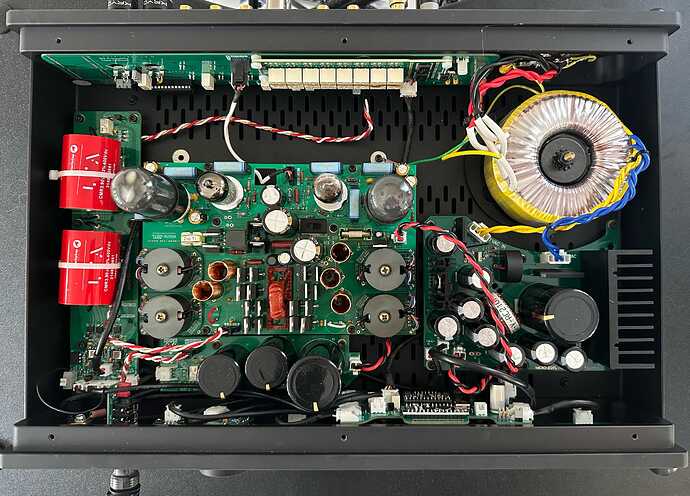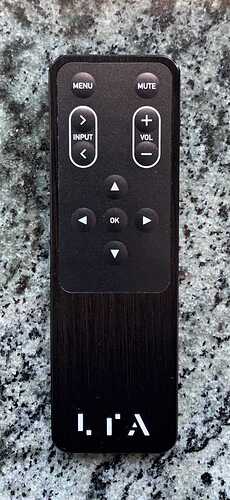I often hear that the military variants are the best option, though that may be more about longevity than audio quality (even though they had to meet specifications).
Usually the military variants are “better”. I found if there is a sound difference they tend to leam a bit more linear and extended, which is “better”.
For mullard it is normally same tube but more solidly built. GZ## were normal rectifiers for them, and i think cv#### were the military tier.
Tung-Sol had their Chatham division, which was like a sci-fi high end lab. Some of the Chathams were suuuuuper beefy and rugged. Special denotations indicated extreme altitude and temperature resilience. These are the potato mashers. Super thick glass and mica bases, cork around the base to seal better and help aid against vibration. Literally could be used as a weapon, could probably crack a skull and still rectify right after.
WE tagged on letters denoting military or JAN versions, 2C52 > JW-2C51. Amperex and Bendix usually gave it a whole new number, 6DJ8 > 6992 > 7308. Many times the original boxes noted they were JAN stock and were very military warehouse style. Ive only seen the small tube versions from them but they seem to be either tiny revisions, or honestly the tube just tested better and was sorted to a more select batch as it was expected to last longer or be more resilient. Thought not 100% guaranteed.
Yeah. Kind of crazy that some of these tubes were used in missiles and rockets, and now we use them in amps and DACs. I prefer their peacetime usage.
Mine are CV2024 and I really like them.
A lot of them were for radios and radar but there are other uses like gyroscopes, computing etc.
Yep mostly radios.
Tubes for the most part weren’t used as switching devices, most “missile guidance” in any real form wasn’t around until after the transistor.
Transistors were switching devices repurposed for amplification, and tubes were always intended as amplification devices. Some of the tubes used in more modern hifi were designed for radio frequency usage rather than Audio though.
Those big backpack radios that you see in war movies where the have the tall floppy antenna hanging from the back and a phone receiver as a handset. Some you even cranked to power them up with a magneto. Imagine the abuse those had to take jarring and getting shot at.
Yes it’s amazing how robust some of those devices were, the Soviets used tubes in radios in fighter aircraft into the 80’s, those things could pull probably 10+G’s.
When I worked in avionics MANY years ago it was all SS, we had big ovens that would heat/cool and continuously vibrate test pieces to see when the board would fail in operation. There is a tendency to think of tubes as delicate, but they were used in some pretty extreme conditions before there was an alternative.
Of course I always forget tubes with metal cases like this exist as well
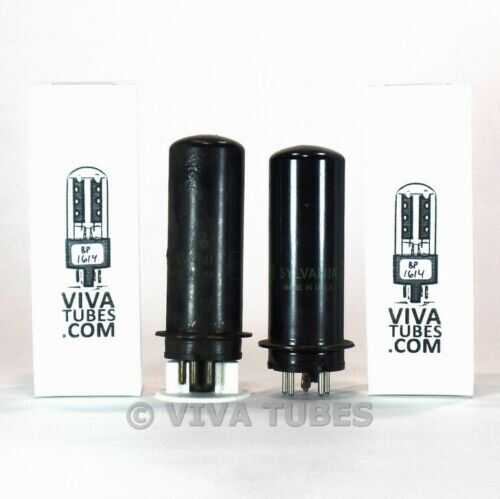
And TV tubes repurposed. Probably some of these tubes were/still are used in missile operations and control rooms, just not the missile itself.
This is a fun article that discusses vacuum tubes and atomic weapons.
Yes this is very common in lower cost amps, because they were made in huge quantities into the 80’s, so they are readily available and hence cheap.
There is this assumption that military tech is in some way more advanced, but it’s not generally the case, they optimize for a very different set of criteria.
I did do some minimal amount of work on Military equipment when I worked in Avionics, at the time we were building the first ever Flight Control System for a helicopter, this was cutting edge stuff and the board it all ran on was based on 10 year old CPU’s, because nothing more modern had been certified by the military.
So the stuff generally isn’t even up to date when it’s produced.
In comparison I also worked on a pitch for a Flight Control System for the airbus A330, that pitch including a processor that wasn’t scheduled to even be available from Motorolla until after the project started.
But yes military stuff is also rarely updated, and has lifetimes much longer than you would think.
I worked with a guy who wrote code to validate encrypted missile launch codes on nuclear subs, and the hardware they ran was so old it couldn’t perform the encryption specified in a reasonable amount of time, so it all had to be simplified.
That’s awesome. It sounds like you worked on some diverse, and pretty cool projects.
Generally with military tube versions I just expect longer tube life. Better Sonic’s is an added bonus.
thanks for checking on the 5751s - glad to hear i didn’t void my warranty
btw, with the nod from LTA, i’m trying E80CCs in the preamp now. just a few hours in but sounds wonderful. the gain jumped significantly though, so much so that i took it down -15dB in the settings to get me back to the 69 position again, lol
Since I’ve enjoyed what I’ve got now. Given the feedback from folks and the list of impact @PaisleyUnderground shared. I went with a low hanging fruit to try. Picked up a pair of RCA 12AX7A simply to remove the typically leaner sounding CONN branded Sylvania I’ve got in the amp section.
Looking forward to what would be my first tube roll on the UL+!
@dB_Cooper Thanks, you inspired me to look at the UL manual for the first time, and check out the various menu options.
The problem I was trying to solve was that when using my Stellia, I could barely get the volume control above 12-15. and I’ve noticed that the mids and bass sound incoherent when the volume is that low. I noticed the same thing with two different Z10Es at CanJam last year and Axpona this year (and even got the LTA rep to agree that he could hear it too), but only with the Stellia, not my other headphones. And I never had this issue with the MZ3, so I assumed that the more powerful amps were just not compatible with very sensitive headphones.
It turned out that what I really needed (and didn’t know existed) was the gain setting, where I could reduce the amp’s gain by 15dB. Now the volume is up at 38, and everything sounds perfect.
RTFM! ![]()
-
The two 12AU7/ECC82 in the preamp section. -
The two 12AX7/ECC83. -
The phase splitters (12AU7) will make the least sonic difference.
I hope you guys all called your moms, thought about your mom if you no longer have her or said happy mother’s day to you wife as the first thing when you got up.
That out of the way, if this list from LTA is accurate, and why wouldn’t it be?
I happened to have a matched pair of Matsushita 12AU7 with an angled getter like these. That were an easy to try in the number 3 slot.
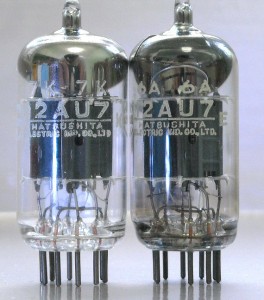
Way more body and way more more depth than the CONN branded Sylvania tubes I replaced. So if they’re supposed to be the “least” impacting, there’s going to be quite a range of impact changing tubes… which I’m actually not really inclined at the moment to even explore further. Too many new things, too many things to really become intimately familiar with before I explore tubes, but I’m leaving the Matsushita in there for sure.
Had to send my UL+ back to LTA because the sub outs weren’t working. It turned out that they’d never tested the sub outs in that particular model because it was a show model and they don’t use subwoofers at shows.
I wasn’t too bothered. They had it for less than a week and paid for shipping both ways, and while they had it, they also upgraded the firmware to use the new remote. They also gave me a new remote, and I have to say it’s the best sounding remote I’ve ever had. ![]()
Since my Omega speakers still haven’t arrived yet (over 7 months now ![]() ), I hooked the UL+ up to my Emotiva powered monitors, which had previously sounded more amazing than a couple of cheap speakers had any right to sound, when previously connected to the MZ3. Unfortunately the sub outs of the UL+ are not anywhere near as good as the MZ3 as there is a very audible noise floor.
), I hooked the UL+ up to my Emotiva powered monitors, which had previously sounded more amazing than a couple of cheap speakers had any right to sound, when previously connected to the MZ3. Unfortunately the sub outs of the UL+ are not anywhere near as good as the MZ3 as there is a very audible noise floor.
LTA confirmed that the sub outs are only fit for purpose for a subwoofer. But they did say that they are trying to figure out if they could get real pre outs into the UL+ in a future upgrade.
The difference between the real intended preamp outputs on some of their models and those that aren’t is striking.
I was under the impression that won’t be the case and used the Z10e to preamp my active speakers and was quite content but when switching to the MZ3 it was apparent on the first track and now when upgrading to the Preamp model it’s even better.
I was asked this weekend what would I do with the preamp once I decide what to do with the Z10e and if it makes sense to keep both (if I end up keeping the Z10e) and in my mind the answer is yes. The MZ3 circuit sounds different and the preamp is something I’ll have a hard time giving up on without a comparable replacement (currently using both outputs, one for the speakers and one for a subwoofer).
Congrats on the remote btw that’s a nice free upgrade. I’m not surprised they are super nice and very service oriented over there.
